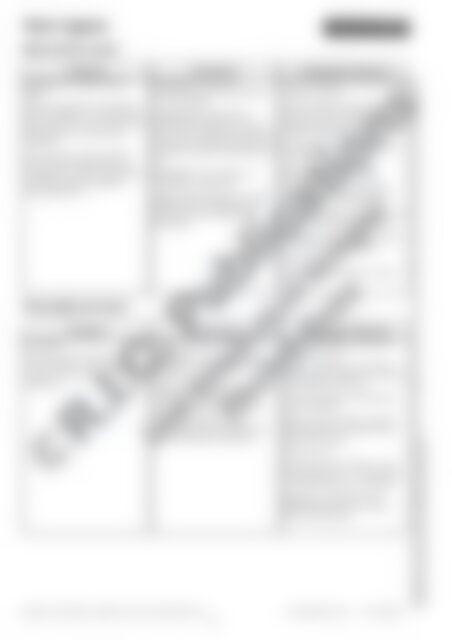20895 ACE Language (Yr 6) Structures and Language Features
Create successful ePaper yourself
Turn your PDF publications into a flip-book with our unique Google optimized e-Paper software.
Text types<br />
Resource sheet<br />
Narrative text<br />
Purpose Structure <strong>Language</strong> features<br />
To entertain, amuse <strong>and</strong>/or<br />
teach<br />
Narratives present the reader<br />
with a problem or complication,<br />
then describe a series of events<br />
telling how it is eventually<br />
resolved.<br />
The narrative may be simply<br />
amusing <strong>and</strong> entertaining or<br />
it may aim to teach the reader<br />
something about problem<br />
solving <strong>and</strong> life.<br />
Procedural text<br />
Orientation: The main<br />
characters, the time <strong>and</strong> place<br />
are introduced.<br />
Complication: Something<br />
becomes a problem for one or<br />
more of the characters <strong>and</strong> this<br />
changes the expected pattern of<br />
events <strong>and</strong> often the characters<br />
too.<br />
Resolution: The problem is<br />
resolved in some way.<br />
Coda: (Optional) Ways in which<br />
people have changed <strong>and</strong>/or<br />
lessons that were learnt are<br />
described.<br />
Australian Curriculum English – <strong>Language</strong>: Text structure <strong>and</strong> organisation (Year 6) www.ricpublications.com.au R.I.C. Publications ®<br />
6<br />
Time connectives to connect <strong>and</strong><br />
sequence events<br />
Textual cohesion maintained<br />
by the use of antonyms <strong>and</strong><br />
appropriate synonyms, including<br />
pronoun reference<br />
Paragraphs to link information<br />
<strong>and</strong> events<br />
Nouns to name particular<br />
people, places <strong>and</strong> things<br />
Adjectives to describe people<br />
<strong>and</strong> settings in more detail<br />
Verbs to tell what characters are<br />
thinking, feeling <strong>and</strong> doing<br />
Adverbs to describe how, when<br />
<strong>and</strong> where things happen<br />
Past tense<br />
Often told in the first or third<br />
person<br />
Purpose Structure <strong>Language</strong> features<br />
To instruct<br />
Procedures can tell the reader<br />
how to make or do something<br />
or give a set of rules to be<br />
followed.<br />
Goal: The task is stated.<br />
Materials: If any equipment is<br />
needed to complete the task it<br />
is listed.<br />
Steps: Each step is given<br />
in chronological order. All<br />
necessary steps are included.<br />
Test: (Optional) A way of<br />
accessing if the procedure has<br />
been followed successfully<br />
Comm<strong>and</strong> verbs usually start<br />
each instruction<br />
Precise vocabulary to provide<br />
details given using noun groups<br />
<strong>and</strong> adjectival phrases<br />
Concise wording, unnecessary<br />
words omitted<br />
Details of time, place, manner<br />
<strong>and</strong> condition provided using<br />
adverbial clauses<br />
Present tense<br />
Instructions are written in the<br />
second person; i.e. ’You should’<br />
is understood, but not stated<br />
Diagrams, illustration <strong>and</strong><br />
photographs may be used to<br />
clarify instructions<br />
Underst<strong>and</strong> how authors often innovate on text structures <strong>and</strong> play with language features to achieve particular aesthetic, humorous <strong>and</strong> persuasive purposes <strong>and</strong> effects (<strong>ACE</strong>LA1518)<br />
© Australian Curriculum: Assessment <strong>and</strong> Reporting Authority 2012


















